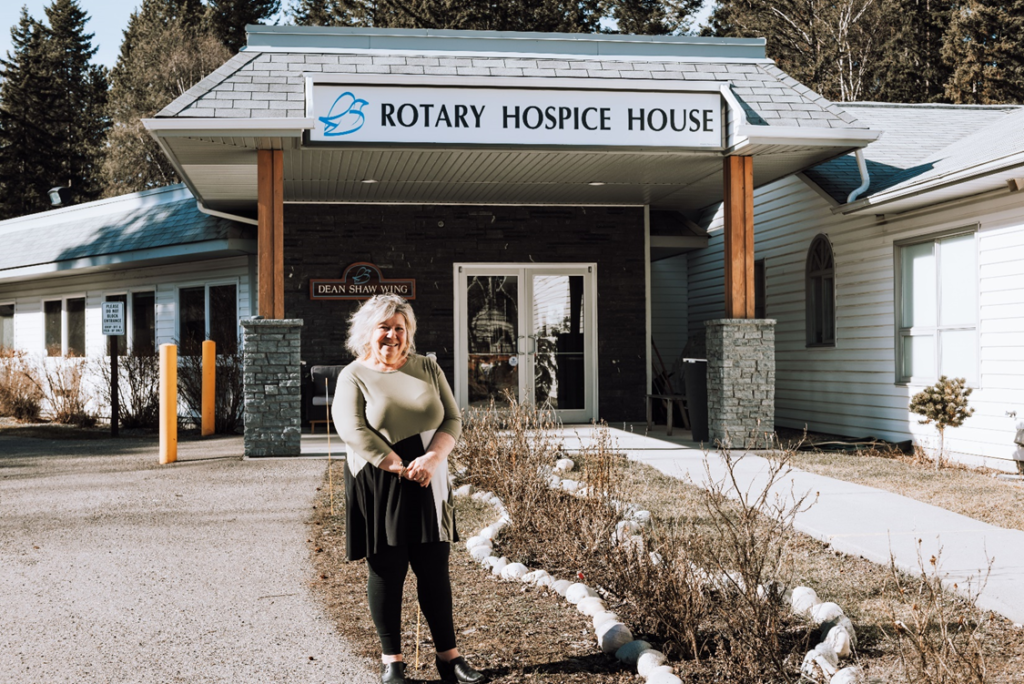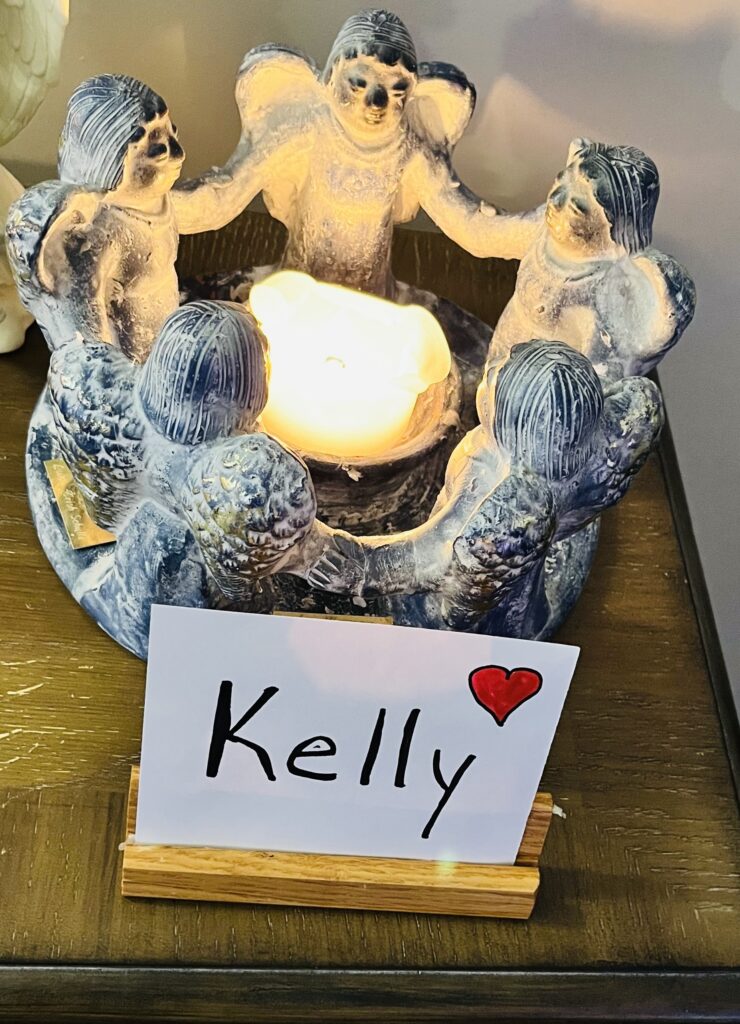Hospice Gives the Community the Power of Choice
Jason Keller – T00655809 – Thompson Rivers University

Photo: Jason Keller and his son reflect on the passing of a loved one on a park bench across from the Rotary Hospice House. (Keller, 2024)
Traditionally, those in end-of-life care and needing medical support in Prince George, BC, chose to spend their last days at UHNBC (hospital) or Prince George Hospice Palliative Care Society (Hospice House), but not anymore. In its pledge to expand hospice services for the community, the Hospice House has begun operating the new Home Hospice program, but it comes at a price. The program, fully funded by the community, costs $800,000 annually to operate, and those funds come from the community’s support. The Executive Director of Hospice House, Donna Flood, says that the program started in response to the community’s voice. Quoting Donna, “If you ask people, 70% [of them] say that they prefer to die at home“. However, without the aid of doctors or nurses, choosing where one is most comfortable in their last days is not always possible. That’s where the Home Hospice program can help. With a dedicated nurse and care aide on 24/7 to support patients and their families at home, the new program gives the residents of the North back the power to choose where they spend their dying days.

Photo: Donna Flood, Executive Director of the Prince George Hospice House Palliative Care Society, poses for a picture in front of the Rotary Hospice House. (Keller, 2024)
If you ask people, 70% [of them] say that they prefer to die at home.
In 1995, the Prince George Hospice Palliative Care Society admitted its first guest at the Rotary Hospice House (RHH), and it has grown ever since. Today, it delivers care to over 230 guests annually and supports over 1400 of their friends and family. Besides care at the RHH and the Home Hospice program, the Hospice House also offers community services such as assistance with grief and bereavement. With the addition of the new Home Hospice program, the Hospice House continues to provide compassionate palliative care to address the unique individual needs of the community. The program has two barriers to its success. One of those problems is as simple as raising awareness so the community understands it exists. The second is ensuring it secures the proceeds it needs to continue operating. Fundraising events are the top sources of that needed revenue, particularly the Dream Home Lottery and the 50/50 draws. While the provincial government provides some of the capital needed to operate the Hospice House, all of the funding for Hospice at Home and the grief and bereavement programs comes from community grants or donations from you, the community. To show your support, you can participate in the Dream Home Lottery or other community events to support their programs. Equally, people are welcome to make cash donations or set up a monthly recurring donation for small amounts such as $25.

Photo: A memorial candle was lit at the Rotary Hospice House after the passing of my mother, Kelly Ashton. (Keller, 2024)
The Hospice House can use more than just the community’s financial support. It relies on the over 130 volunteers that support residents at the end of life, help operate grief programs, assist in fundraising events, help with landscaping, and even shovel snow. Volunteers interested in assisting in palliative care are extensively trained in programs that give them the skills to support people and their families through the end of life. If you want to volunteer but don’t think that you can handle someone’s death or family grief, there are still plenty of other ways to help. If you would like to donate to support programming or volunteer with the Prince George Hospice Palliative Care Society, please contact them by phone at 250-563-2551. You can also reach out through the Prince George Hospice Palliative Care Society website at https://pghpcs.ca/.